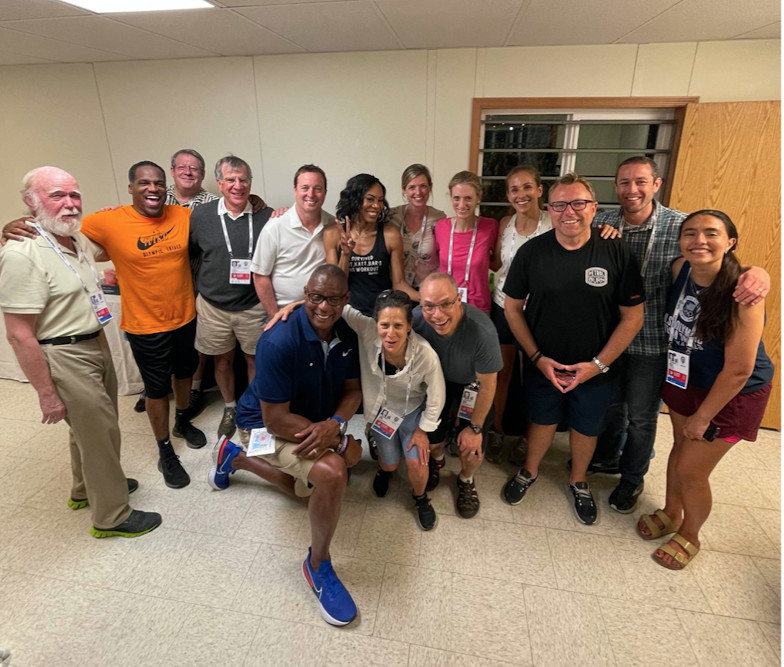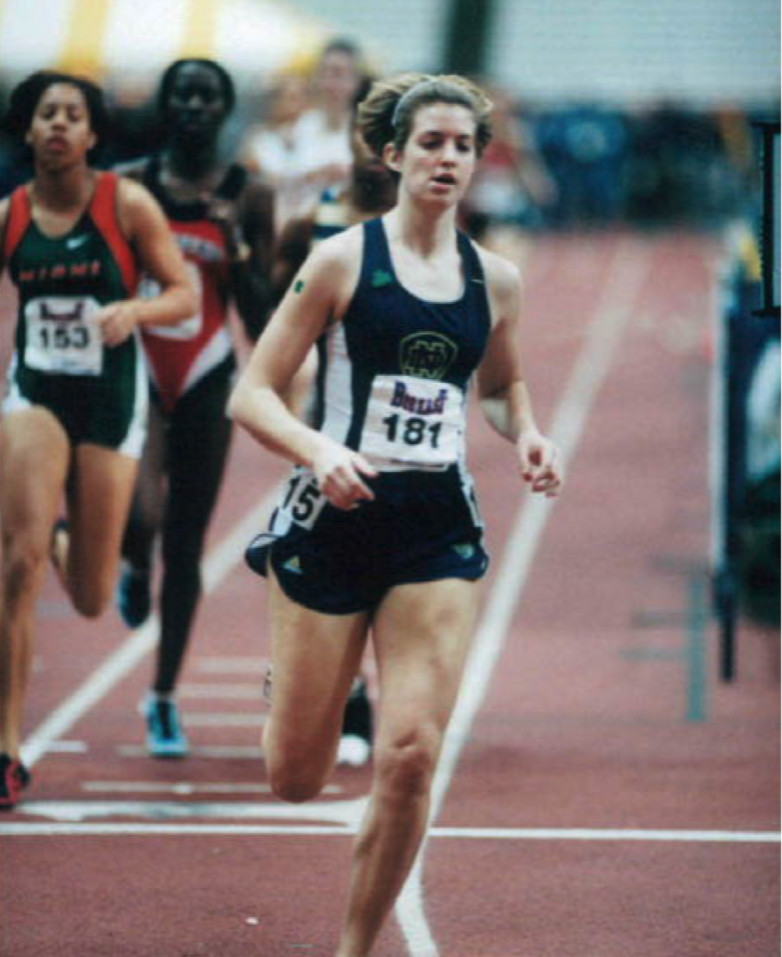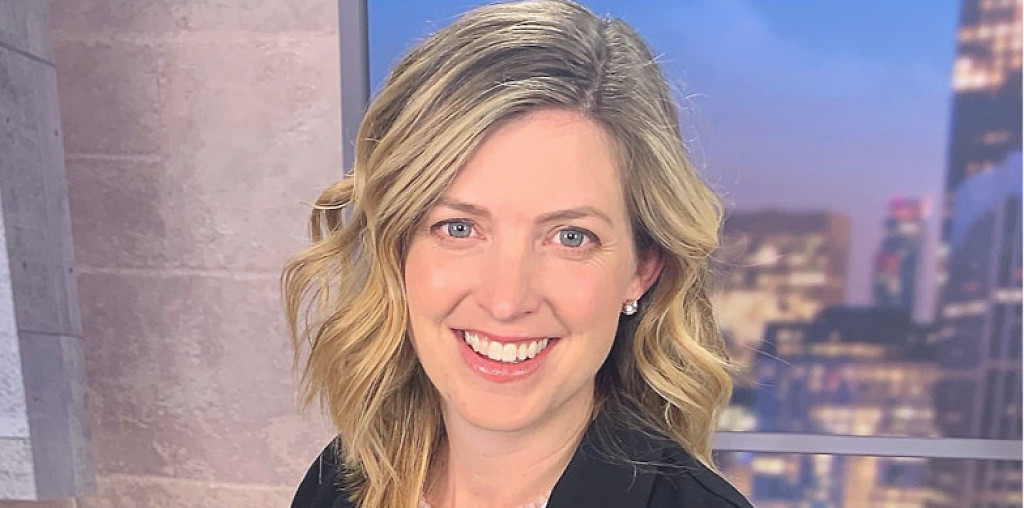Running News Daily
Running News Daily is edited by Bob Anderson. Send your news items to bob@mybestruns.com Advertising opportunities available. Train the Kenyan Way at KATA Kenya and Portugal owned and operated by Bob Anderson. Be sure to catch our movie A Long Run the movie KATA Running Camps and KATA Potato Farms - 31 now open in Kenya! https://kata.ke/
Index to Daily Posts · Sign Up For Updates · Run The World Feed
Betsy Riley and NBC's Olympics Production Team Are to Thank for the Peaking Track Coverage
The network’s Olympics production team is peaking at the right time—thanks, in part, to Betsy Riley, its first female producer.
Track and field reporter Lewis Johnson is live on NBC during the third day of the Olympic Track Trials in Eugene, Oregon—and he’s perched on the steeplechase barrier in front of the water jump.


He explains the origins of the event, from the 1800s in England. Graphics flash on the screen, showing the specifics of the modern-day version of the steeplechase, 28 barriers over a 1.86-mile race. Johnson describes how the barriers don’t move as he tries, unsuccessfully, to hip check the one he was just sitting on.
Then the segment takes a whimsical turn. He walks around to the water side of the jump, kicks off a pair of green Nikes, and wades in. “Oh, that feels so good, Diff,” he says, talking to Leigh Diffey, the lead announcer at the Trials.
As Johnson gets to the deepest portion of the pit, the water is lapping at the bottom of his khaki shorts. He sits down at the edge. “Throw me a towel, man,” he says, before the broadcast cuts to the 17 women lined up at the start of the first heat of the women’s steeplechase.
It’s effective television: In one minute and 17 seconds, the segment has entertained and informed viewers—those who might not know the first thing about one of track’s quirkiest events as well as those who understand the basics of steeple but have never gotten close.
The idea for the segment? That came from the Trials producer, Betsy Riley.
Riley has implemented dozens of changes to NBC’s track broadcasts. Some are obvious improvements, like bringing on two-time Olympian Kara Goucher as a commentator, or using double boxes to keep a camera focused on track action during commercials. Others are behind-the-scenes, out of sight of viewers, but which contribute to better coverage.
The result is that long-suffering track fans, who for decades from their recliners have made a secondary sport of complaining about the way track is aired, suddenly find themselves with little to carp about. In fact, anecdotally at least, they’re happy to tune in, whether it’s on their TVs or phones or tablets, and watch running and field events.
That’s largely because Riley is one of them, a true believer and competitor with a lifelong love of track and field.
A pair of firsts
Riley will make TV history this month when she becomes the first woman to produce track and field at an Olympics for NBC. Network brass plan their coverage of the summer Games around swimming, gymnastics, and track—these three disciplines are the “tentpoles” that anchor the coverage—and in fact, Riley is the first woman to produce any of the sports for NBC at the Games.
“We’re so proud of her,” said Molly Solomon, who is the executive producer for the summer Games, also a first for a woman at NBC. “The fact that she’s producing an ‘A’ venue, track and field, at the Olympics, one of the big three. It’s a huge accomplishment.”
But Riley brushes this aside. While other people are making a big deal out of it, she is not, deflecting attention to the great role models she’s had at NBC, including Solomon, and the team of experts she has around her.
A pair of firsts
Riley will make TV history this month when she becomes the first woman to produce track and field at an Olympics for NBC. Network brass plan their coverage of the summer Games around swimming, gymnastics, and track—these three disciplines are the “tentpoles” that anchor the coverage—and in fact, Riley is the first woman to produce any of the sports for NBC at the Games.
“We’re so proud of her,” said Molly Solomon, who is the executive producer for the summer Games, also a first for a woman at NBC. “The fact that she’s producing an ‘A’ venue, track and field, at the Olympics, one of the big three. It’s a huge accomplishment.”
But Riley brushes this aside. While other people are making a big deal out of it, she is not, deflecting attention to the great role models she’s had at NBC, including Solomon, and the team of experts she has around her.
From there, she raised her hand for anything, filling any role, on coverage of surfing, golf, horse racing, college football, college basketball. And always the Olympics and Olympic sports. These days, she’s also Michele Tafoya’s sideline producer on Sunday Night Football.
Amid the long hours that TV requires, Riley met her husband and got married, and they have two children, ages 4 and 1 1/2. In a year when talk of mothers and motherhood has dominated track and field, Riley has her own story to rival them all.
It was 2017, she was 35 weeks pregnant, and she had just finished producing the Prefontaine Classic, a Diamond League track meet in Eugene. On her flight home to Baltimore, somewhere over the Midwest, her water broke. When the plane landed, she took a cab straight to the hospital, and met her husband there. A few hours later, they welcomed a son—who had jumped the gun by more than a month.
Infinite possibilities
Track and field is among the most complex sports to broadcast, and Riley strives to replicate for viewers at home an experience that would be similar to what happens when spectators are watching live, in the stadium. They can choose to watch running on the track or look to the infield for one or more field events happening simultaneously. How do you get that same sense of the action on screen?
On June 26, the penultimate day of Trials competition, Riley sits in the cramped NBC production truck, staring at 30 different screens displaying various camera angles. On her headset she hears the voices of seven on-air commentators. Riley has field events producer Scott Karpen a few feet to her left and director Charlie Dammeyer inches to her right, so close you could barely hold a discus between them. A countdown until the live show begins. Four minutes. Two minutes.
Into her headset, Riley says in a low voice, “Have a great one, everyone.”
From there, Riley is making constant decisions for the next two hours from an infinite combination of elements: which replays to show, when to air a graphic, when to go to a field events package on the women’s hammer throw that happened earlier in the evening, how much time to devote to Sydney McLaughlin walking toward the track while leaving Diffey enough time to voice the element.
Riley, Dammeyer, and Karpen trust one another completely, which makes Riley’s job easier as she decides which family members and coaches to show, when to go to live interviews with happy athletes who just made the Olympic team (and what to do when one lets an expletive slip, as Elle Purrier St. Pierre did after winning the 1500 meters). Karpen describes the role of producer as “the ultimate multitasking job.”
Her background helped make Riley great, observers say, because she grew up in sports television, filling every position, from the entry level production associate calling graphics to working in the videotape area to being in charge of the tape area. She’s been in the front of the truck as the associate director who assists the director and producer in timing.
“If you do those jobs, when you are promoted to producer, you understand what everyone is doing,” Solomon said. “You understand what they need from their leader. You can synthesize all of it. It’s an amazing skill, but you can have six voices in your headset and hear the right ones at the right time. It’s orchestrated chaos.”
A different person might be ruffled by the pressure, but Riley’s steady demeanor is one of her hallmarks.
“I always admire her measured style in the heat of battle,” Solomon said. “She’s very calm, cool, and collected, but she knows what she wants, and she’s direct. That’s what makes great producers—to have a clear head in the middle of the chaos and be able to communicate to the team and lead the team.”
Riley says her faith in the people around her makes it easy. “Our team is incredible,” she said. “It doesn’t happen without every single person contributing, sharing ideas and then pulling in the same direction when we’re on air. In any successful broadcast, you have great teamwork.”
But she has trouble explaining what is going on in her brain during broadcasts, synthesizing all the camera angles and voices, making scores of journalistic decisions every minute. All she can say is that she’s constantly evaluating: What’s the most important right now?
Building team chemistry
None of it happens by accident. Every live broadcast is the result of months of brainstorming, testing, planning, and coaching.
“People at home see the ultimate product,” Karpen explains. “They don’t see the months and years and hours of thought and time she’s put into this. Nothing happens overnight. It’s because Betsy was somewhere in the world thinking, ‘How can we get better?’ And pushing people to think about this. It’s not show up and let’s make TV. This is hours and years to get to that one moment.”
Riley is known for listening at meetings, soliciting input from anyone who wants to contribute, giving serious consideration to all ideas.
“One thing I absolutely respect about her is that nothing is a bad idea,” Dammeyer said. “Ideas come from everywhere. She’s asking everyone, ‘What do you think?’ Everyone has a seat at the table, from Ato [Boldon] to Leigh to the graphics production assistant. Everybody’s voice counts.”
When Goucher first started doing on-air commentary for NBC this spring, Riley gave her extra coaching sessions, telling her what she was doing well and what she needed to improve. On the live broadcast, Riley is in Goucher’s ear.
Goucher remembers watching Abbey Cooper pull away in the early laps of the first round of the women’s 5,000 meters, trying to get the Olympic standard on her own in the Eugene heat. “I was like, ‘This is crazy.’ Betsy was in my ear. ‘Why is this hard? Tell the audience why this is hard.’ She gives me little cues.”
Goucher has been one of the revelations of the track season—a hit with viewers for the passion she brings and the insights she shares, gleaned from her own career as an athlete. But nothing motivates her as much as her producer’s live coaching. “If I do something that she likes, she says, ‘Well done.’ She’ll give you a little feedback as you’re going, which I find super helpful.”
Which isn’t to say that it’s always roses. Boldon has been working NBC broadcasts for 14 years. In 2019, around the time of the Prefontaine Classic, he and the other commentators and members of the production team were summoned to a meeting.
“You know how when a team is playing really badly and you have a players-only meeting?” he said. “Right. We had one of those. The chemistry wasn’t right, the flow wasn’t right. It was watching a team of really good players play badly because they can’t play with each other.”
In Boldon’s telling, Riley led the meeting and didn’t mince words with her assessment of what needed to improve. The message? “Swimming and gymnastics get the baton and we have to bring it home for NBC,” Boldon said. “Everyone in that room was as serious as a heart attack. She came with receipts. She came with video—she had put together a whole package. ‘Look at this. What’s wrong with this? Can we do better here?’”
It was a turning point. “I think the broadcast we did from the Eugene Trials was the best Trials broadcast I’ve ever been a part of,” he said.
A network’s core values
NBC coverage—no matter who the producer is—focuses on two things, according to Riley. First, getting the sport right. And second, storytelling.
“Sometimes people think of storytelling as a soft human interest story, and that’s possible, but it’s also storytelling about the race itself and the athletic event itself,” Riley said. “Storytelling is part of everything we do at the Olympics.”
Donavan Brazier in a feature about fly fishing before the men’s 800 final? That’s storytelling. Lewis Johnson wading into the water jump pit? Also storytelling. But most important is the race itself. Replays that show Dalilah Muhammad getting out to a fast start in the women’s 400-meter hurdles, or Cole Hocker’s kick to win the men’s 1500 meters are, at their core, about storytelling.
The goal of every sports broadcast is to make the viewer care about who they’re watching. Riley understands this, and she’s not afraid to push the envelope with technology to help viewers better understand track and field.
During the Trials, fans of the distance races rejoiced at coverage that continued through commercials with double boxes. It’s a feature that’s been around for five years, Riley said, but its use is expected now.
“Sponsors are noticing that it’s nice to have action, it’s nice to have people sticking around for those commercials,” she said. “Early on there was definitely an effort to showcase the value of it. Now that we’re five years on, people know that’s expected and what track fans really want.”
Riley has been experimenting with other forms of technology—miles per hour graphics and live leaderboards that show how many meters behind athletes are from the leader. The point, always, is to give the viewer at home deeper understanding.
Heading to Tokyo
On the NBC broadcast in primetime, Riley and her team will make sure track and field is accessible for those who tune into the sport only once every four years. Boldon says Riley has pushed him not to rely on statistics and times. Instead, she’ll be in his ear during broadcasts, urging him along to find a different way to tell stories. “Make me care,” she’ll say. “Make me care.”
But changing technology allows viewers to customize what they see. If hardcore triple jump fans want to watch every minute of triple jump or discus from Tokyo, and not just a highlights package, that’s possible with the cable channels and digital streams.
And that means as the broadcast team heads for Tokyo, they’ve got hours and hours of work ahead of them. For 10 straight days, July 30 to August 8, Riley and the team will be at it, documenting the performances and the emotions they inspire.
“For the TV dorks like we are, our team relishes the opportunity to do lots of TV and cover lots of competition,” Riley said. “That’s really fun stuff.”
by Runner’s World
Login to leave a comment




